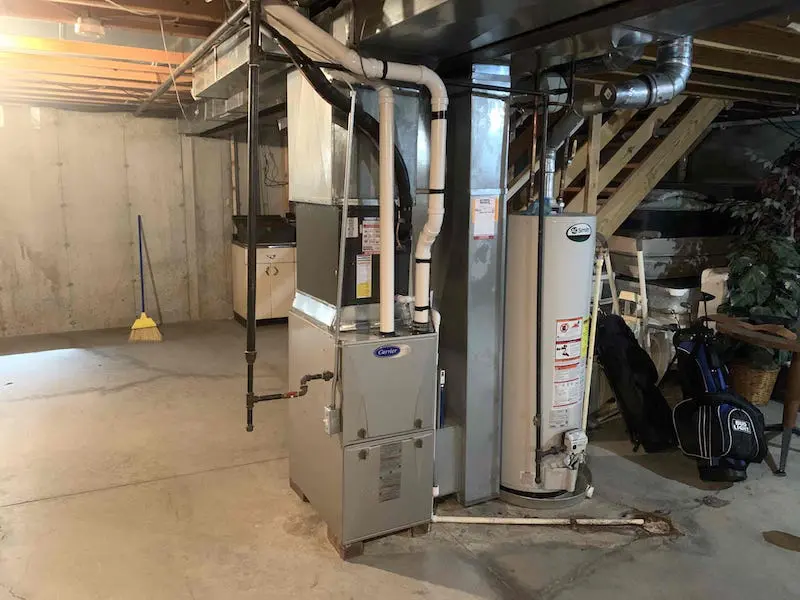Preparing Your HVAC System for Cincinnati’s Weather Extremes

Getting your comfort system ready for winter
- Replace or clean your air filters every 1-3 months or more often if needed.
- Check and clean the furnace area. Remove any stored items and dust from around the furnace.
- Test your thermostat. Before it actually gets cold, switch it to “heat” mode and see if the heating system starts properly.
- Inspect your ductwork for leaks. Heat loss through duct leaks can drive up winter bills.
- Insulate exposed ductwork, especially ducts in unconditioned areas like your attic, basement and garage.
- Check your carbon monoxide detectors, install fresh batteries and test your alarms.
- Check flue pipes and chimneys (for gas furnaces). Ensure the exhaust is safely vented outside.
- Schedule a professional furnace inspection.
- Cover your outdoor AC unit (optional).
Getting your comfort system ready for summer
- Replace or clean your air filters every 1-3 months or more often if needed.
- Clean around your outdoor unit. Remove leaves, dirt and debris within two feet.
- Set your programmable thermostat for a cost-efficient cooling schedule.
- Inspect your ductwork. Seal any leaks with mastic sealant or metal tape (not duct tape).
- Run the AC before the first heatwave to check cooling performance.
- Clear and clean vents and registers. Make sure vents are open and not blocked by furniture.
- Inspect refrigerant lines. Check for signs of wear or leaks in the insulation.
- Schedule professional maintenance.
These essential maintenance tasks can help ensure your system runs efficiently during both peak seasons
- Change or clean filters regularly
- Keep outdoor units clear
- Schedule professional HVAC tune-ups
- Optimize thermostat settings
- Inspect and seal ductwork
- Check the condensate drain line
- Clean indoor vents and registers
- Listen for unusual noises
- Monitor airflow and room temperatures
- Check carbon monoxide detectors regularly (for gas heating systems)
A month-by-month home HVAC maintenance calendar
(Change/clean air filters at least every other month).
January
- Check thermostat settings.
- Inspect CO detectors.
February
- Inspect visible ductwork for leaks.
- Clear debris around outdoor units.
March
- Schedule spring tune-up.
- Test air conditioner before first hot day.
April
- Clean outdoor AC condenser coils.
- Check refrigerant lines for insulation damage.
- Verify proper airflow at vents.
May
- Set thermostat for cooling season.
- Clear drain line (pour a cup of vinegar to prevent clogs).
June
- Inspect outdoor unit.
- Clean/adjust indoor vents and registers.
July
- Check cooling performance (if weak, call for service early).
August
- Inspect ductwork in attic/basement for loose connections.
- Clear outdoor unit of summer debris.
September
- Schedule fall tune-up.
- Test thermostat for heating (before it’s needed).
October
- Clean around furnace area.
- Inspect exhaust flue (for gas furnaces).
- Test CO detectors.
November
- Insulate exposed pipes and ducts.
- Set thermostat for heating season.
December
- Vacuum indoor vents and registers.
- Listen for unusual furnace noises.
- Check emergency heat (if using heat pump system).
Why schedule your professional HVAC tune-ups early
If you call your Cincinnati heating and air conditioning service early, you will beat the seasonal rush. We can identify and fix small heating or AC repairs that cost little to fix before they become expensive emergencies. Regular tune-ups improve energy-efficiency and extend equipment lifespan; they also keep warranties valid (some manufacturers require annual maintenance).
Here’s what the best heating and AC companies in Cincinnati do during tune-ups
- Inspect and clean coils
- Check refrigerant levels (for AC/heat pump)
- Test thermostat accuracy
- Lubricate moving parts
- Tighten electrical connections
- Check and clean blower components
- Inspect flue and venting (for gas systems)
- Test system startup, operation, and shutdown
- Inspect safety controls
With proper maintenance, your HVAC system will run cost-effectively for as long as possible. If you are unsure about what to do when, contact us today!
